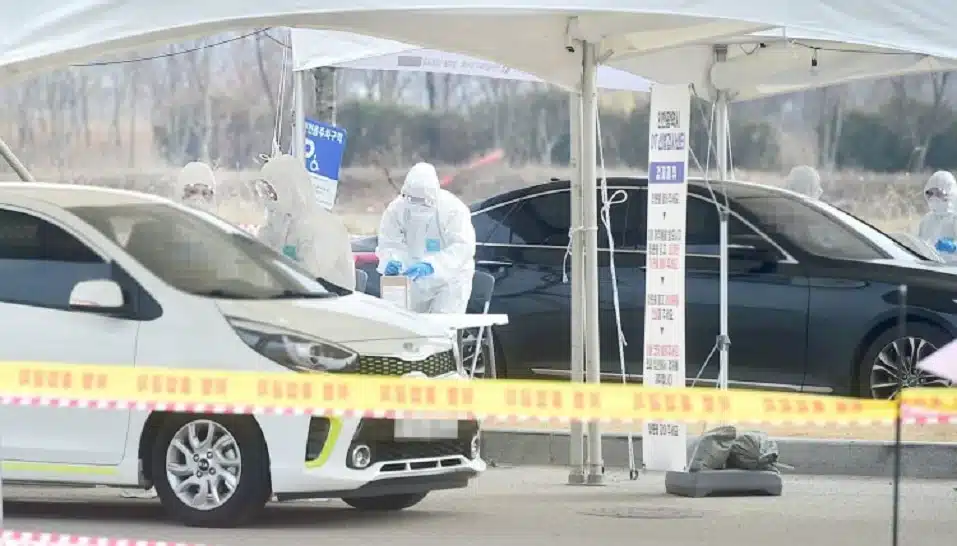South Korea’s fight against COVID-19 had been commendable, with active case and fatality numbers dwindling towards the end of April. However, the second wave of cases since May has prompted the government to reinforce effective measures.
On June 22, the director of the Korean Center for Disease Control, Jeong Eun-kyeong, declared the second wave of COVID-19 cases and estimated that it has been underway since the beginning of May. The number of confirmed cases per day shot up from the single digits in late April-early May to a peak of 67 on June 20.
South Korea’s fight against COVID-19 had been commendable, with active case and fatality numbers dwindling towards the end of April. However, a long weekend in May brought religious and social congregations with it: along with the second wave of coronavirus cases.
The second wave of COVID-19 is essentially an upward trend in the epidemic curve of a country after the primary attack of coronavirus has subsided. A second wave can be the result of multiple factors, like resuming social activities, change in season, or easing of travel restrictions. Infectious diseases like COVID-19 can also resurface when a cluster of cases is allowed to grow and evolve into a wave. This highlights the need for constant monitoring of clusters. Thankfully, in South Korea, the entire pandemic response model was centred around rigorous contact-tracing and bio-surveillance practices.
Early strategies
On January 20, this year, the National IHR Focal Point (NFP) of The Republic of Korea reported the first case of COVID-19: a 35-year old female resident of Wuhan, China. A press release from the Korean CDC reported this case to the public and informed them that the national alert system had been scaled up from Level 1 to Level 2, and that contact tracing and pneumonia surveillance in health facilities were both already underway at the time. While national borders were not closed immediately, quarantine and screening measures for passengers from China were in place at all ports of entry.
The epicentre of the COVID-19 pandemic in South Korea, which has been linked to 5,213 cases till date, was a service gathering at the Shinchunji Church of Jesus in Daegu. A symptomatic female visited the church after going to the local hospital, and came in contact with 166 people, before she tested positive for COVID-19 on February 18. Instead of initiating a national or regional lockdown, South Korea focused on increased bio-surveillance, with each confirmed patient being linked to a cluster; epidemiological links being monitored, and all their contacts being asked to self-quarantine.
South Korea devised a strategy to increase their testing ability while reducing the risk of infection for healthcare workers or the people tested via ‘drive-through’ low-contact testing. The patient, who is the only one in their vehicle, drives up to the booth, and is registered by an administrative agent, and swabbed for the collection of the sample by the doctor, while one person disinfects the vehicle. The entire procedure is complete with minimal contact in the span of 10 minutes, and the patient receives their report via SMS.

Seoul perspective
South Korea, having experienced pandemics in the past – most recently the MERS (Middle Eastern Respiratory Syndrome) in 2015 – had put into place the Infectious Disease Prevention and Control Act of Korea which outlined strategies to actively prevent and restrict the spread of infectious diseases in the country. According to the Global Health Security Index report in 2018, Seoul was the third most prepared city in the world for a pandemic pre-COVID-19. Yet, Seoul seems to be bearing the brunt of the impact of the second wave of COVID-19 in the country.
With a population density twice that of New York City, Seoul was a likely target for COVID-19 but managed to avoid the worst of the impact of the disease in South Korea due to effective action on the part of the government. However, with social distancing measures having been eased, clusters arising from areas of public congregation have been growing rapidly in the capital of South Korea. Nightclubs are the biggest contributor to cases in the city, followed by a call centre, day-care centre, and several churches.
For now, the government has communicated to the public that the threat of COVID-19 is not over. The mayor of Seoul announced that the capital may have to once again employ strict social distancing measures if cases don’t decrease soon.

















